How Hamburg turned an old warehouse district into an artists’ quarter
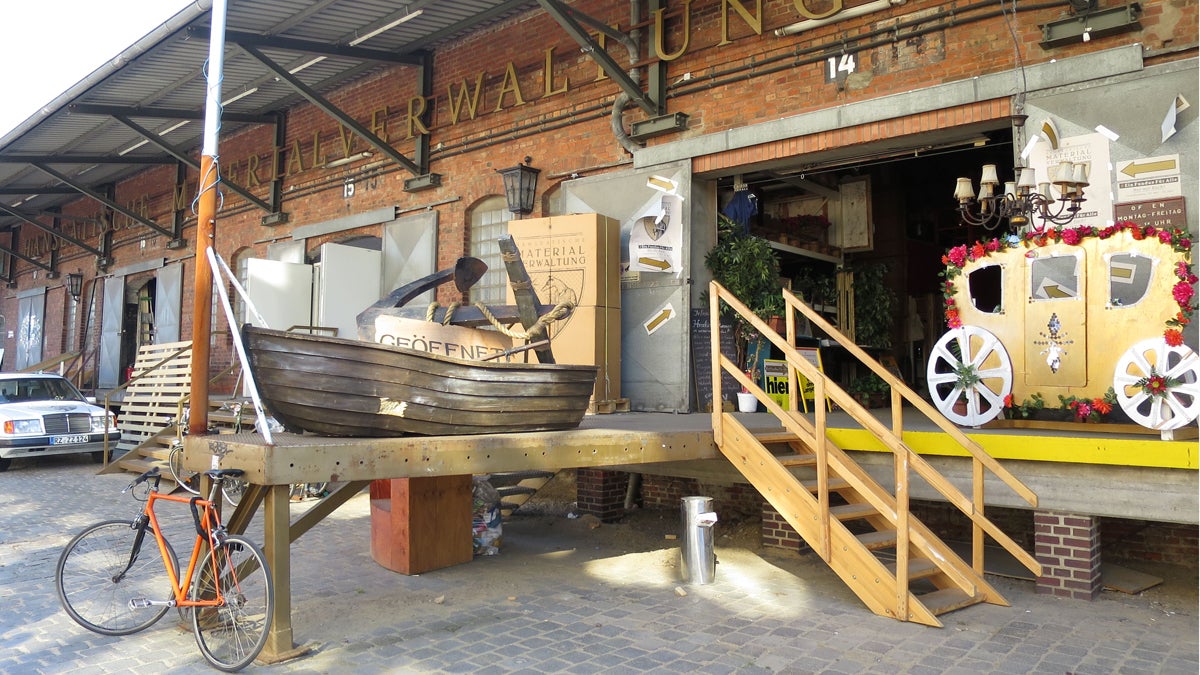
An artist space at Oberhafenquartier in Hamburg. (Marielle Segarra/WHYY)
The sixth in a series of Keystone Crossroads posts from German cities.
I just spent a few weeks in Germany as part of a German/American journalist exchange program through the RIAS Berlin Kommission and the Radio Television Digital News Foundation. I’m sharing lessons on urban planning and revitalization from German cities, including stories and photos on an urban garden in Berlin, bike-friendly infrastructure in Münster and adaptive reuse of former coal mines in Essen. Today’s topic: how the city of Hamburg has carved out space for artists in old warehouses.
In the center of Hamburg, Germany, tucked away under a bridge and down a cobblestone street, there are rows of old warehouses that were once part of a freight depot.
Walk a couple minutes down the middle row, look to your right, and you’ll see this:
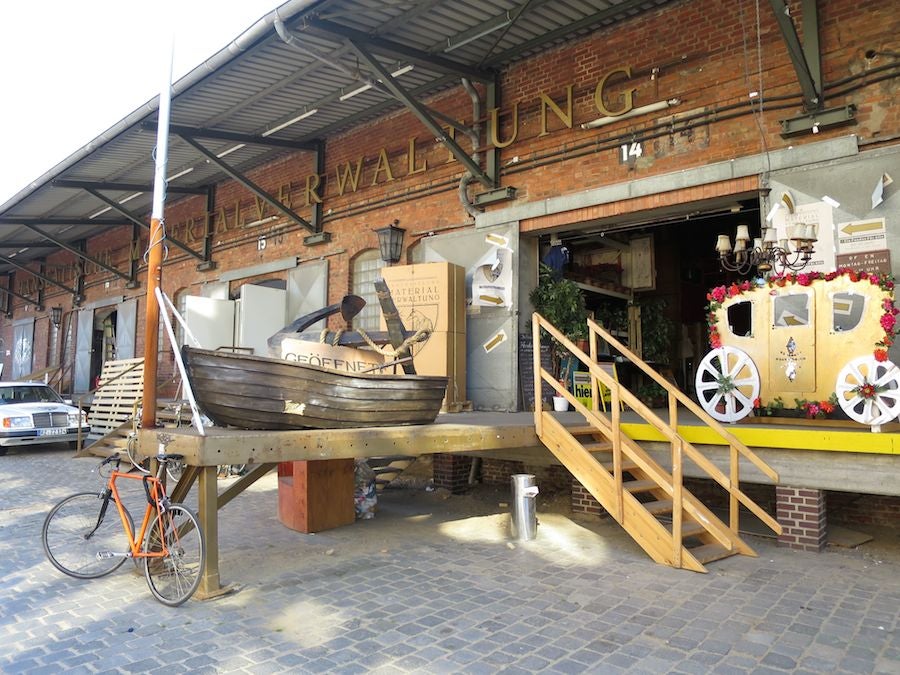
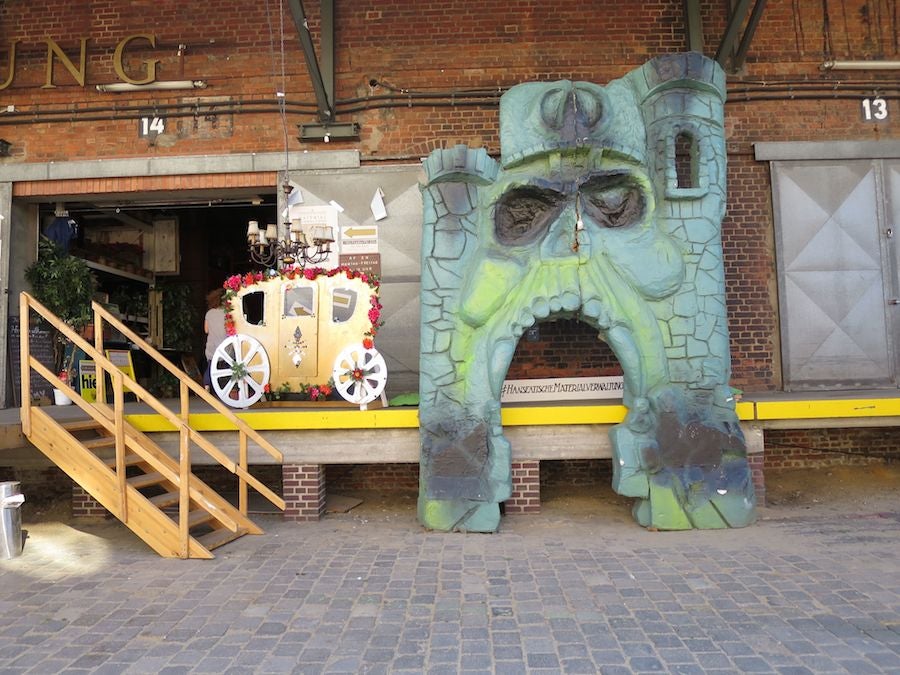
(Marielle Segarra/WHYY)
These whimsical objects mark the home of Hanseatische Materialverwaltung, a nonprofit organization that repairs, stores and sells film props and sets. The group’s mission is to support productions from student organizations, community theaters and other groups with limited means.
Hanseatische discounts its props depending on its customers’ budgets. Student performances get a steep price cut. Big film companies pay market price.

A marionette on display at the nonprofit’s warehouse space. (Marielle Segarra/WHYY)

The organization displays many of the props as full sets, to inspire artists and performers. (Marielle Segarra/WHYY)
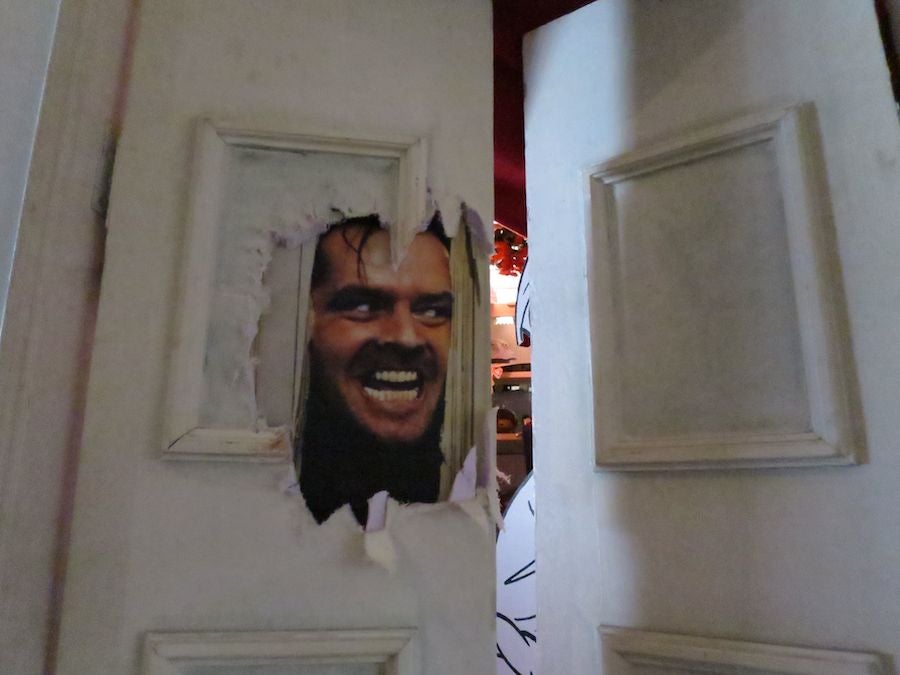
Recognize this scene? (Marielle Segarra/WHYY)
Hanseatische Materialverwaltung has operated out of the former freight depot for two years, as the pioneer tenant in Oberhafenquartier, a 6,000 square-meter artists’ quarter created by the city.
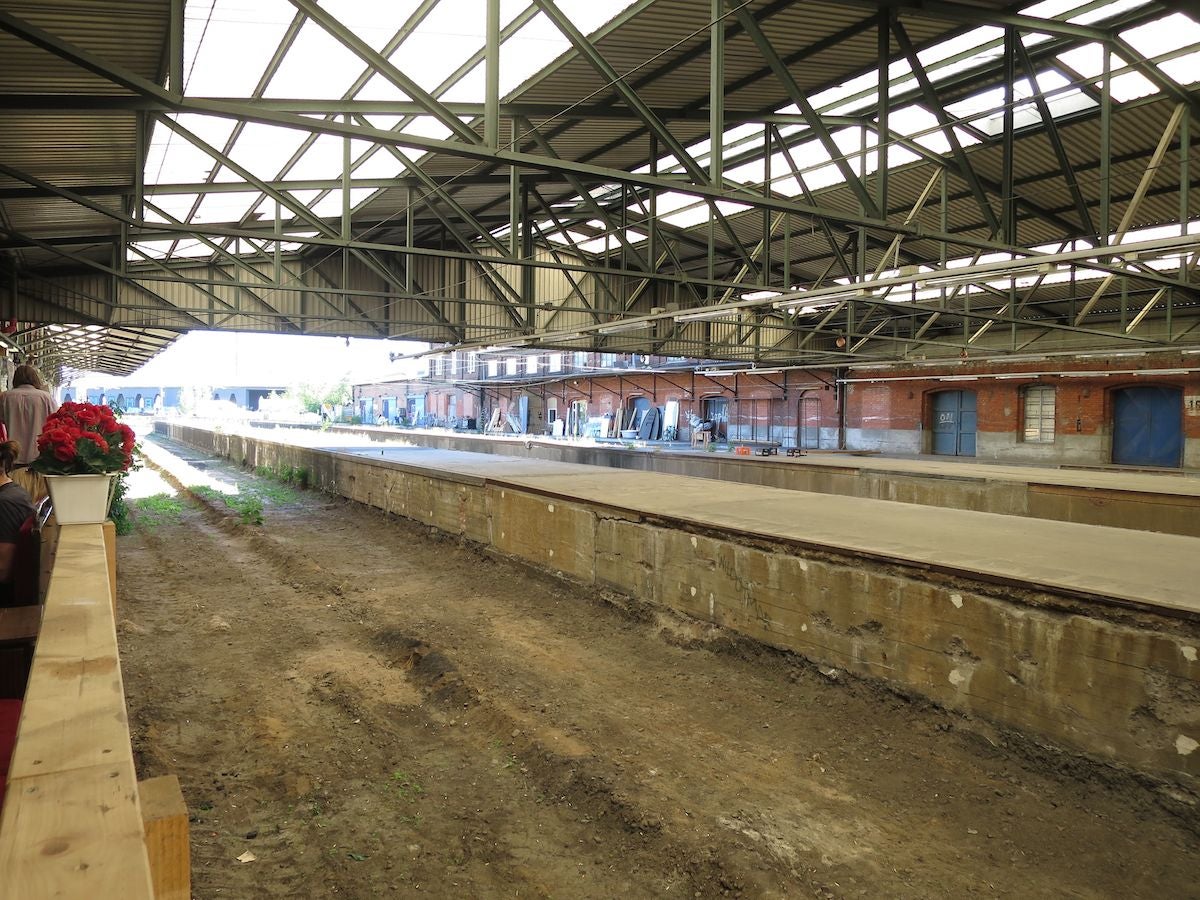
The remnants of the freight depot inside Hanseatische Materialverwaltung’s warehouse space. (Marielle Segarra/WHYY)
The quarter is part of HafenCity, a mixed-use development on Hamburg’s Elbe waterfront, once a bustling port.
The city owns the Oberhafenquartier land and rents it to creative groups for cheap — about five euros per square meter. (Hanseatische Materialverwaltung pays slightly less than that.)
It’s not the absolute cheapest price these artists could find within the city limits, but the rent is much less than it would be elsewhere in HafenCity or Hamburg’s center, said Jean Rehders, project manager of Kreativ Gesellschaft, a city institution that supports Hamburg’s creative industries and co-manages Oberhafenquartier with HafenCity GmbH, the waterfront development management company.
The idea of Oberhafenquartier is to provide artists a place to thrive and innovate in the heart of the city.
Artists have to apply to become tenants at Oberhafenquartier, and they’re not guaranteed a spot even if there’s available space. The last time Kreativ Gesellschaft called for applications, it only chose a handful of applicants as tenants. It’ll hold another competition soon.
So far, there are 10–15 “actors of the creative industries” in the quarter, including a composer, a photographer, a set designer and Gängeviertel, an artists’ collective, Rehders said.
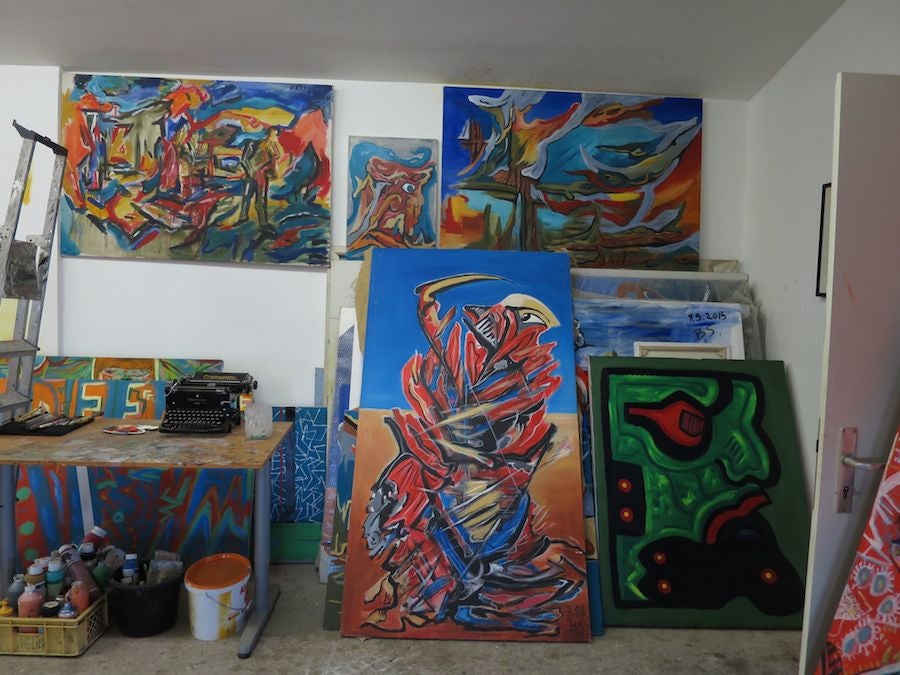
An artist’s studio at Gängeviertel’s space in Oberhafenquartier. (Marielle Segarra/WHYY)
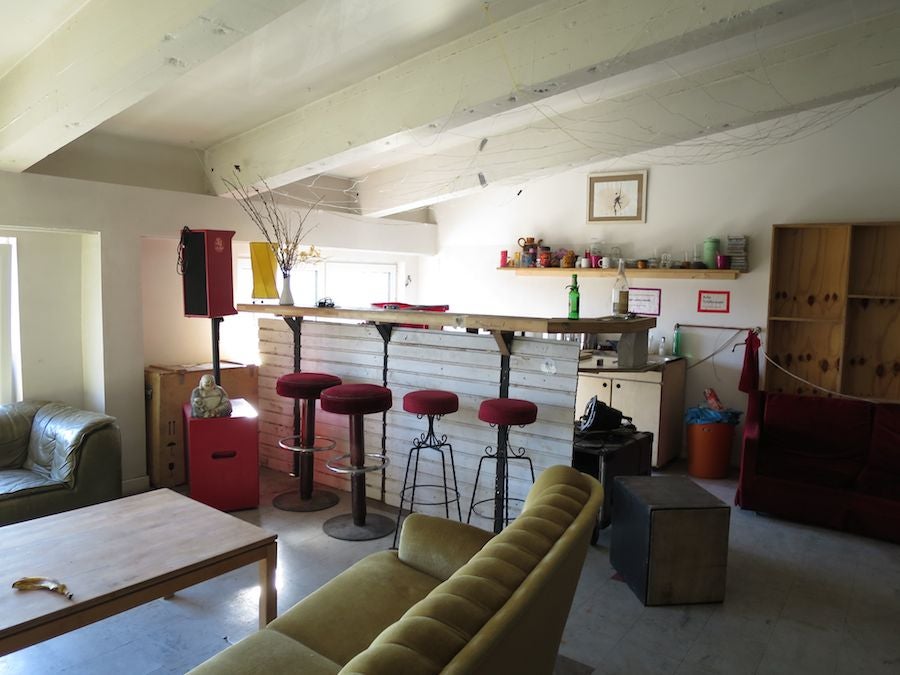
A community room at Gängeviertel‘s Oberhafenquartier space. (Marielle Segarra/WHYY)
Gängeviertel’s building also includes a dance room and co-working spaces.
The tradeoff of cheap space
There are challenges to renting a former warehouse at Oberhafenquartier. For one, tenants have to upgrade much of the space themselves.
The city does basic renovations in each warehouse, providing electricity, water and wastewater piping, and making sure the space is safe and meets fire codes. But the tenants do the rest: installing toilets, doing interior construction and even building smaller spaces within the warehouses, because it’s not possible to insulate the entire building.
And although the space is part of HafenCity, which is known for its advanced flood protection measures, the artist quarter isn’t flood-proof. That means tenants are taking a risk locating there.
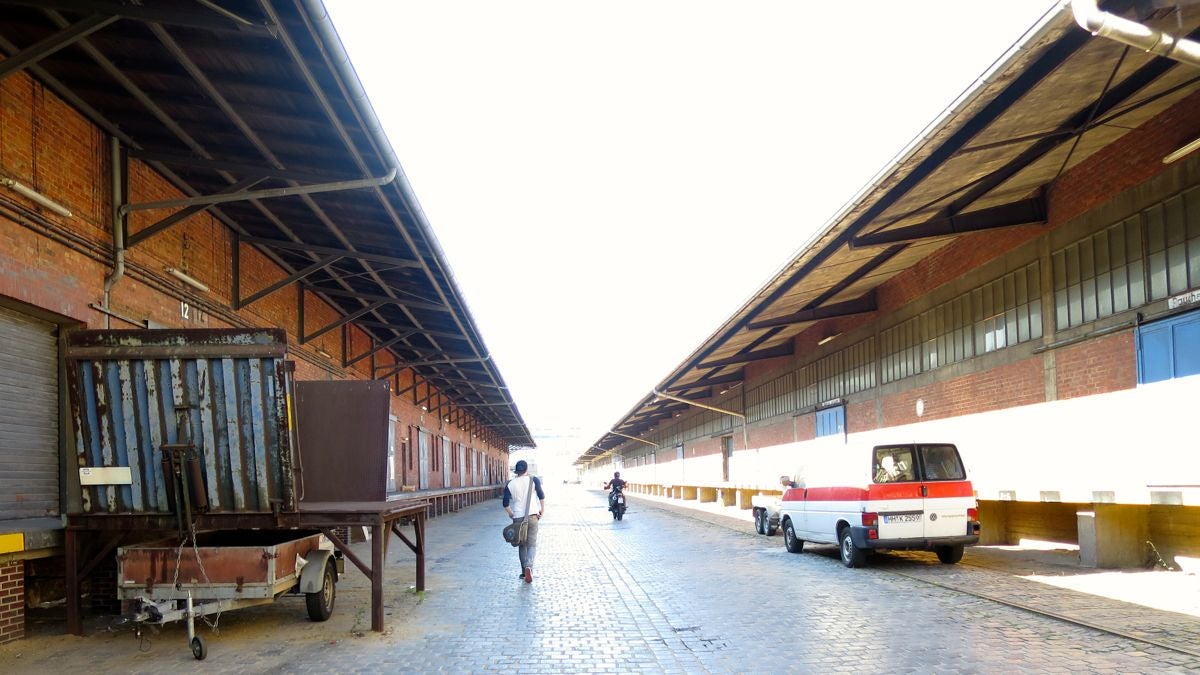
A row of warehouses at Oberhafenquartier. (Marielle Segarra/WHYY)
The groups say there is a benefit to having their headquarters in this particular location. For one thing, it’s central, so they get more walk-in business.
“It’s really accessible, so it’s easy for people to come and pick up stuff, and get right on the subway afterward,” said Jens Gottschau, co-founder of Hanseatische Materialverwaltung. Subway access is especially useful for his organization’s customers, who may not have the budget to hire a moving van, Gottschau said.
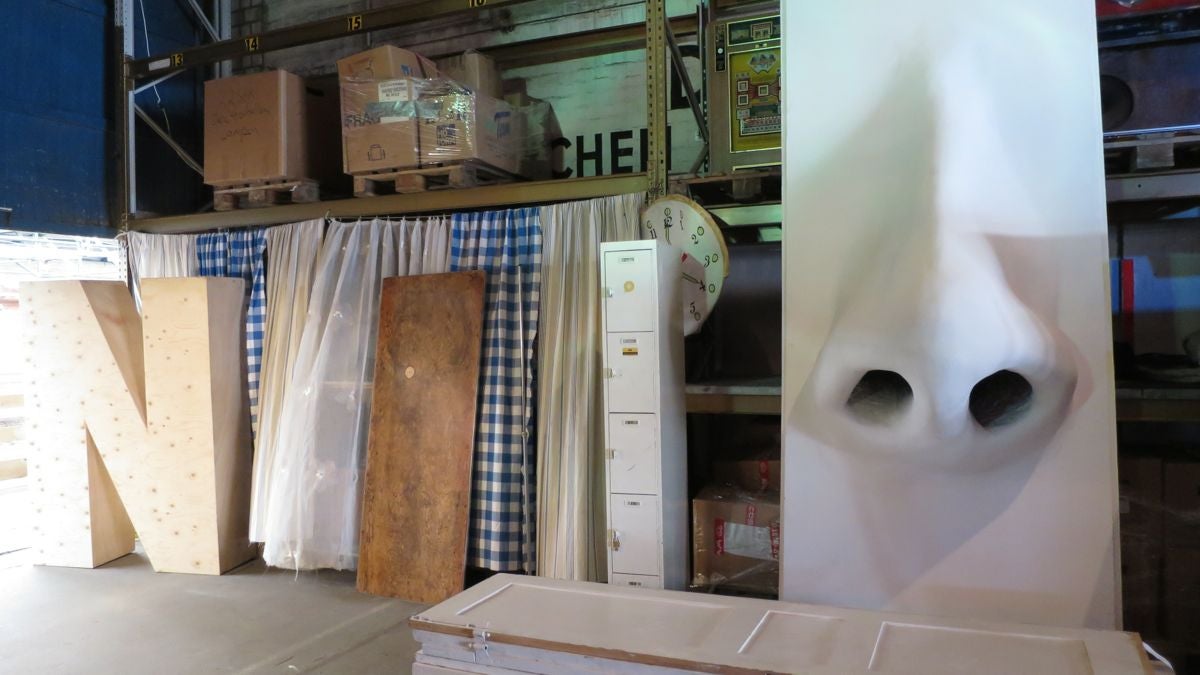
More props from Hanseatische Materialverwaltung. (Marielle Segarra/WHYY)
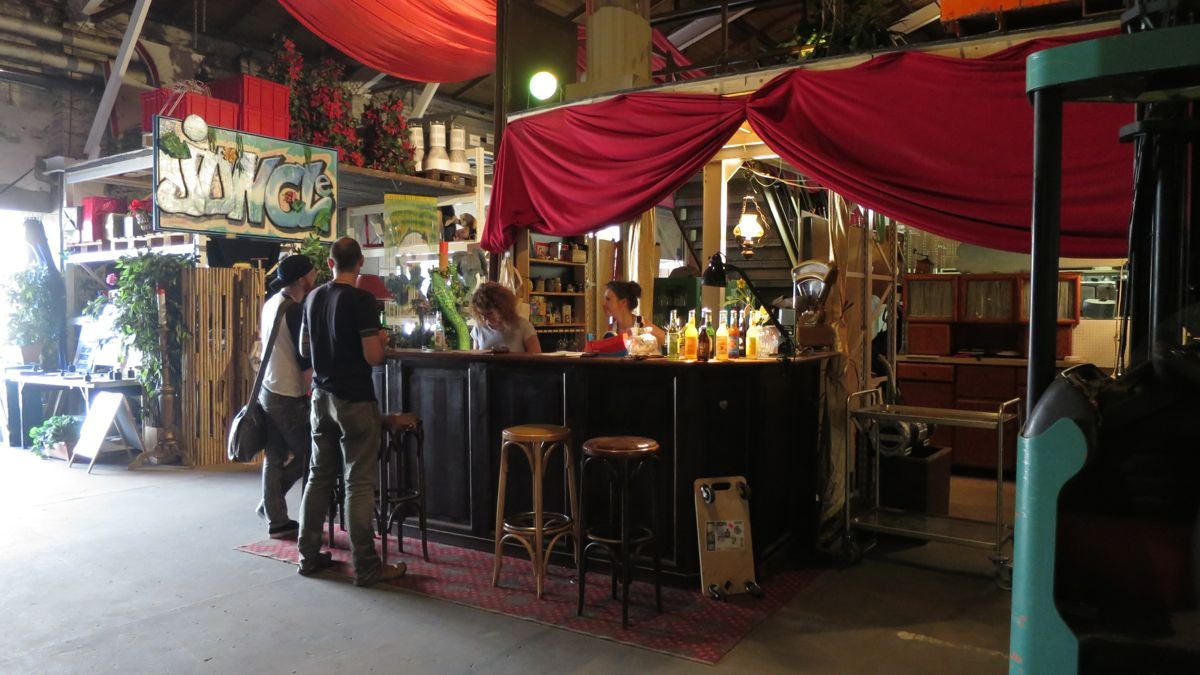
A bar in the Hanseatische Materialverwaltung warehouse. (Marielle Segarra/WHYY)
Rehders said that because Oberhafenquartier gets a lot of press, the groups located there also become more visible.
Patronizing artists in Pennsylvania cities
Many Pennsylvania cities have departments dedicated to supporting the arts. In Philadelphia, there’s the Office of Arts, Culture and Creative Economy, which oversees city art programs and serves as the main point of contact in the government for Philadelphia artists.
Philadelphia also has a Mural Arts Program, which aims to “transform places, individuals, communities and institutions” through public art.
The closest Pennsylvania comes to having its own Oberhafenquartier, it seems, is Oil City’s Artist Relocation Program, which connects artists with realtors and provides other incentives for them to move to the city. The hub of the program, the ornate former headquarters of a John D. Rockefeller subsidiary company, is home to 18 artists, as Kate Lao Shaffner reported for Keystone Crossroads last August.
York had an artist homestead program that provided grants for down payments and settlement costs until funds ran out. Last year, the city was also considering hosting an artist colony in several historic buildings.
Johnstown also has an artist relocation district and offers financial incentives for the artists that move there.
And the mayor of Braddock founded Braddock Redux, a nonprofit organization that supports the arts. One of the group’s projects is UnSmoke Systems, a gallery and studio space in a repurposed Catholic school.
Other cities, like Lancaster, also have programs that support the arts.
Most cities will say the arts are a boon to innovation and quality of life. Still, this idea of the city acting as a landlord to artist groups is novel.
Look for more posts about lessons from Germany in the coming weeks.
We also have a new series called “Ideas Worth Stealing.” Every week, Keystone Crossroads will look to cities across the world for lessons in urbanism and municipal governance that could benefit Pennsylvania. The first post is about investing pension funds in infrastructure.
WHYY is your source for fact-based, in-depth journalism and information. As a nonprofit organization, we rely on financial support from readers like you. Please give today.


